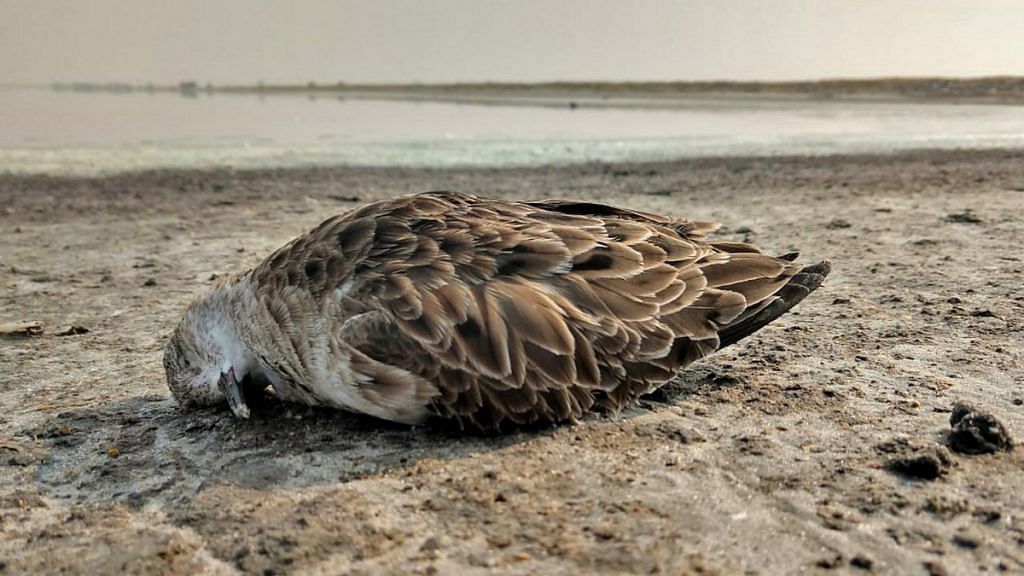New Delhi: In an alarming development, hundreds of birds were found dead in and around Rajasthan’s Sambhar Salt Lake, which is India’s largest inland saline water body, over the past 10 days.
According to reports, the birds that died belonged to at least 25 different species, including Pallas’s Gull, Redshank, Gull-billed tern, Stints, Plovers, Avocets, Shovelers, Sandpipers and Ruddy Shelduck.
While the reason behind the deaths is yet to be ascertained, Arindam Tomar, chief wildlife warden of Jaipur, told ThePrint that samples of carcasses have been collected and sent to a laboratory for testing. The results are expected within a week.
Located 80-km southwest of Jaipur, the wetlands surrounding Sambhar lake is visited by thousands of pink flamingos and other species migrating from northern Asia and Siberia each year.
Karthikeyan Vasudevan, a conservation scientist at the Centre for Cellular and Molecular Biology in Hyderabad, said hundreds of birds dying within a short period of time in and around the lake calls for a thorough investigation.
Bengaluru-based Conservation India has shared several images of dead birds, captured mostly by birdwatchers, on its website. Some of these show carcasses already in advanced stages of decomposition, indicating that the deaths may have occurred over a fortnight ago.
Bharati Chaturvedi, founder of Chintan, an NGO working for environmental sustainability and social justice, also took to Twitter to express concern over the developments.
SOS. Something going seriously wrong in #Rajasthan Sambhar Lalt Lake. Hundreds of birds being found dead around it by our birder friends in the last 10 days. This pic from yesterday. We need to act. What's wrong? Toxic water? Other? @CMRajasthan @SachinPilot @PrakashJavdekar pic.twitter.com/AD4MR0q0lH
— Bharati Chaturvedi (@Bharati09) November 11, 2019
Also read: Ideal diet for humans isn’t affordable for 1.58 billion people, says Lancet study
Shrinking landscape & lesser migratory birds
The number of migratory birds visiting the Sambhar lake area has already gone down in the recent years due to reduced rainfall and a shrinking landscape. A study has shown that the number of migratory birds have reduced to just 1,389 in 2018-19 from over 20,000 in 1995.
The latest incident indicates that the number of migratory birds visiting the area could further reduce, causing an ecological imbalance. In the absence of migratory birds that feed on fish, the lake’s marine population can see humongous growth in a short period of time. Such a situation would be detrimental to both the lake’s health and its surrounding wetlands.
Also read: Potted plants don’t really improve indoor air quality, finds new study by US university
